The French IFV
Like most NATO countries, France studied an infantry fighting vehicle starting in 1965, in replacement to the AMX-VCI. Contrary to the latter it had to have full NBC protection and amphibious capabilities. It was classed as an AFV due to its 20 mm automatic cannon. The development by Atelier de Construction d’lssy-les-Moulineaux (AMX) took four years as the first two prototypes were released in 1968. The production was only launched in 1973, when the new IFV was first accepted in service. Since then, production has resumed until the late 1980s, only maintained for exports. The French IFV, now replaced by the 8x8 VBCI, was declined into around fifteen versions and sold to nine countries.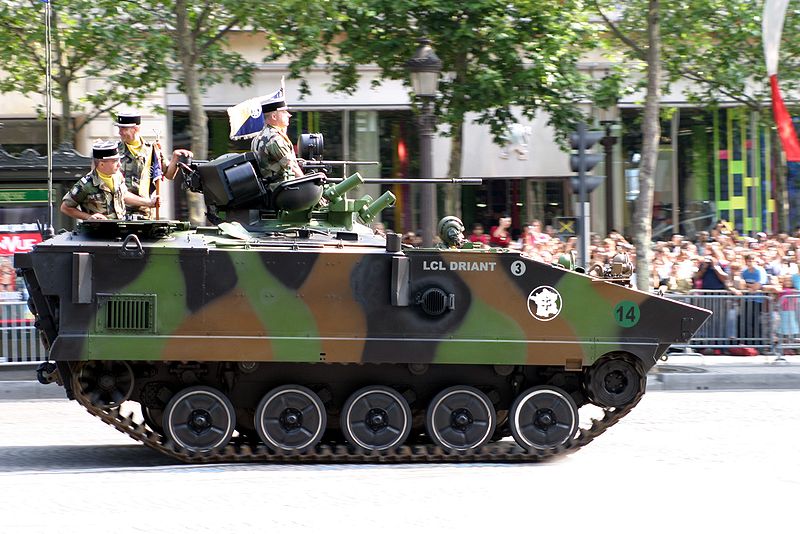
AMX-10P, 14 July parade.
Design of the AMX-10P
Contrary to the previous AMX-VCI, the 10P was a standalone vehicle which shared nothing with other models. The hull was made of welded aluminum armor plates. Frontal arc protection is assured against 14.5mm or even 25mm rounds while all-around it's only against small arms fire and shell splinters. There is as required an NBC protection system, a heater, and for active protection two to four smoke dischargers located on the turret front. In addition, optional NBC detector and decontamination equipment could be provided. Also on the turret was located the PH 9A searchlight, which could be mounted either side.Compartmentation was standard for an APC/IFV with the driver sitting in the front-left (four periscopes, central IR one) while the engine was located to his right. The infantry is located to the rear, each seating on individual bucket seats, four facing outwards, two besides the turret and two at the rear facing inwards. They could operate their individual weapons through four pistol ports, seeing through 7 day roof periscopes and disembark using either the two doors or the electrically powered ramp. Also there were two roof hatches, hinged in the centre, that can be raised and locked in place.
The turret located behind houses both the commander and gunner side by side. The two man Toucan II turret operated a low-profile 20mm GIAT M693 autocannon served by a day sight with 6× magnification. With a maximum range of 1500m and a rate of fire of 700rpm, this gun can defeat a 20mm armor plate at 1 000m and had 800 rounds in store (260 HE, 65 AP), but was not stabilized. It was completed by a coaxial 7.62mm AA52 light machine gun (2,000 rounds). For added AT capabilities, even the basic AMX-10P can carry two Euromissile MILAN launchers (10 missiles carried in the hull). A dedicated HOT (2x4 launchers) version was also designed. But the most impressive by far is the PAC-90 tank destroyer fitted with GIAT's 90-mm high velocity gun that can fire APFSDS ammunition among others. It is shared by the Panhard ERC-90.
For mobility, the 10P relies on a supercharged Hispano-Suiza HS 115 diesel engine developing 280 hp (210 kW) for a Power/weight of 19.7 hp/tonne. The drivetrain comprises five rubber-clad roadwheels per side, front drive sprockets and rear idlers, with three return rollers per side. The suspension units are torsion bars, with hydraulic shock-absorbers units on the first and fifth road wheel stations. Tracks are fitted with replaceable rubber pads. With a top speed pf 65 kph (8 on water), the AMX-10P could climb a 60% gradient, 30% side slope, 0.7m Vertical step or gap a 1.6 m wide trench.
The engine was upgraded in recent years, coupled with a strengthened gearbox, and the suspensions were also changed, to cope with the additional weight of added armour. Fully amphibious without preparation, it relied on rear water jet propellers while a front trim vane (with glass) was raised for swimming. Marines Forces are using the modified version equipped with a new 300hp engine, modified tracks, protection, larger water jets, bilge pumps, larger and transparent trim vane, and increased anti-corrosion treatments. It came either in the 25mm armed version of the 90mm GIAT TD version.

AMX-10P PAC-90 Singapore
Variants
AMX-10P 25: One-man Dragar 25mm cannon turret (June 1983)AMX-10P Driver training vehicle (turretless)
AMX-10P/Milan ATGM launcher vehicle (Two launchers)
AMX-10P/HOT, Toucan II turret and 2x2 HOT launchers
AMX-10 TM 120mm RT-61 mortar carrier
AMX-10 PAC90 Fire support variant
AMX-10P Marines (Improved amphibious variant) 12.7/25/90mm main gun
AMX-10 PC "Poste de Commande" with command stations and antennae
AMX-10P RATAC Fitted with a radar for aerial surveillance
AMX-10P SAO Artillery Observation vehicle
AMX-10P SAT Artillery Surveillance (gyrostabilised theodolite and navigation systems)
AMX-10P VOA Artillery Observer vehicle
AMX-10P SAF/ATILA Fitted with the automatic artillery fire-control system
Exports
-Bosnia Herzegovina: 25 ex-UN vehicles-Greece (no longer in operations)
-Indonesia (Marine corps, 100 AMX-10P 90)
-Iraq (destroyed/scrapped, some refurbished recently at Basra for street fighting against ISIS)
-Morocco (unknown)
-Qatar (unknown)
-Saudi Arabia (600)
-Singapore: 44, no longer in operations.
-UAE: 18
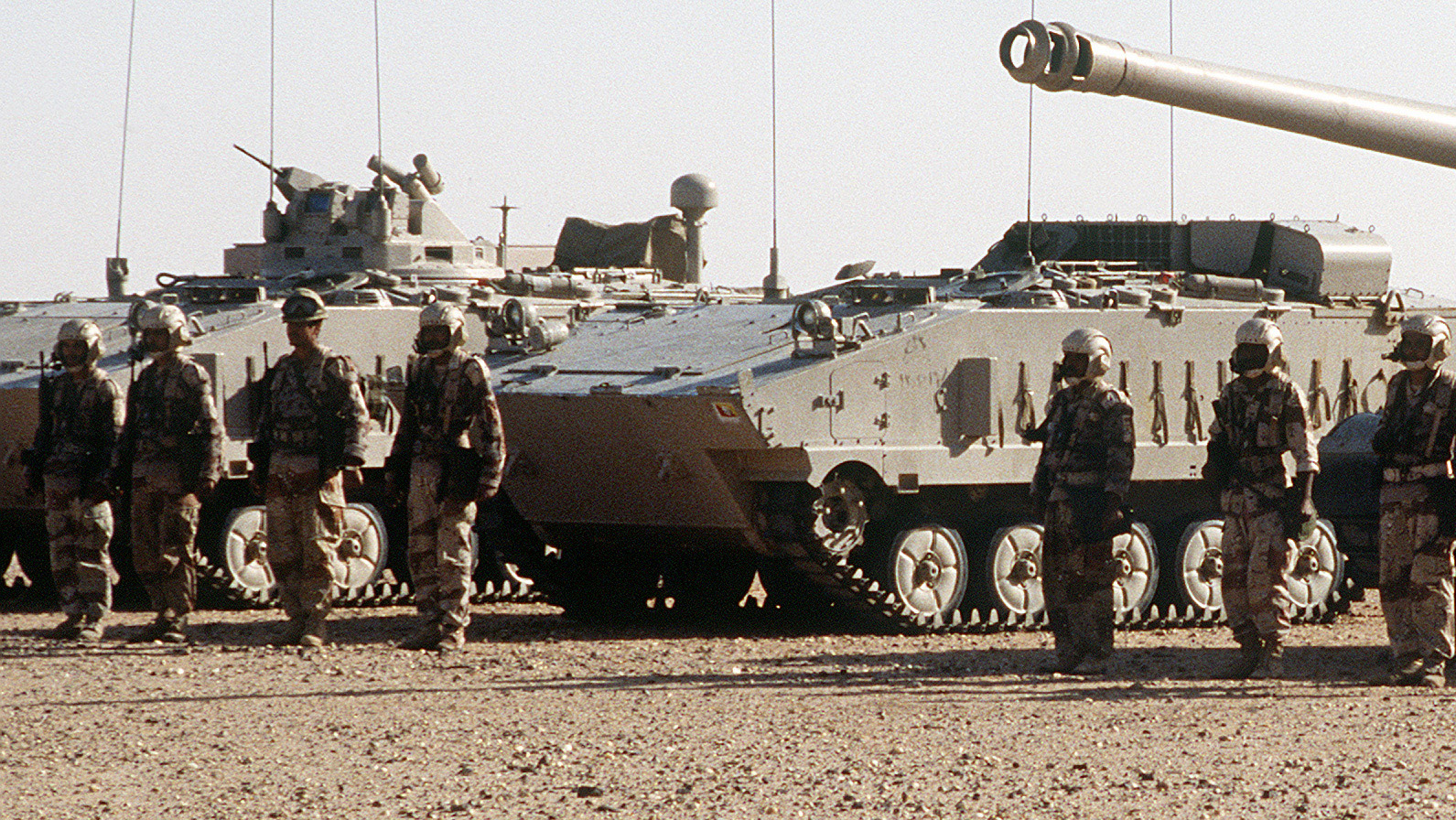
Saudi Arabian AMX-10P
Active service
The first unit to operate the AMX-10P in 1973 was the 7th Mechanised Brigade stationed at Reims. The AMX-10P was first used in the aftermath of the Yugoslav war, in Bosnia-Herzegovna for peace-keeping missions under UN mandate. However contrary to what is sometimes stated, none was used with the Division Daguet in the 1991 Gulf War. The faster VAB was used instead. Nexter undertook the modernization of the remainder of these vehicles (108) between 2006 and 2008. The upgrades were aimed at improving the transmission, armour and suspensions. For export also, an active armour kit was made available to current operators. The the 35th Infantry Regiment in Belfort was the first to retire all its IFVs in December 2008.Links/sources
The AMX-10P on wikipediaOn chars-français.net
Also Army-technoloy, army-guide
AMX-10P specifications |
|
| Dimensions | 5.85 x2.78 x2.57m (19 x9 x8.4 ft) |
| Total weight, battle ready | 14.3 tons (28,400 ibs) |
| Crew | 3+8 (driver, commander gunner +8 infantry) |
| Propulsion | Hispano-Suiza HS 115 280 hp (210 kW) |
| Suspension | Torsion bars |
| Speed (road) | 65 km/h (40 mph) |
| Range | 600 km (373 mi) |
| Armament | GIAT M693 F1 20mm, coax 7.62mm AA52 LMG |
| Armor | 8-25 mm max (see notes) |
| Total production | 2000+ in 1973-1985 |
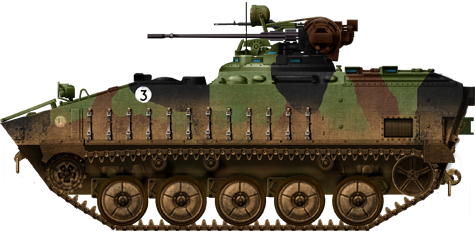
Basic AMX-10P Infantry Fighting Vehicle as used by the french Army for three decades.
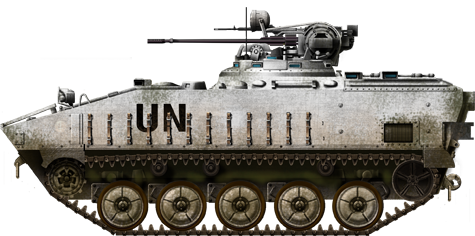
Model used by UN French troops in Bosnia (about 18 were passed onto the Bosnian Army)
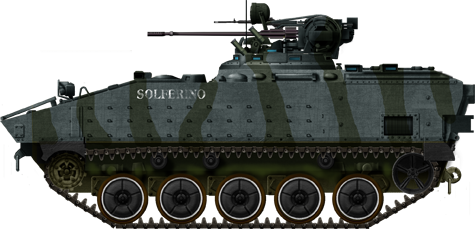
FORAD (FORce ADverse) "opposite force" training model, 2000s
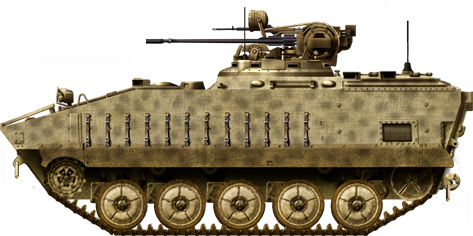
United Arab Emirates Army model
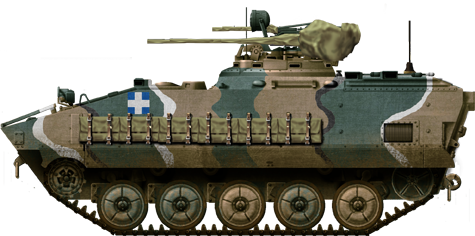
Greek model
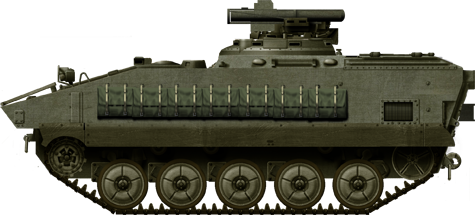
The ATGM HOT tank destroyer version
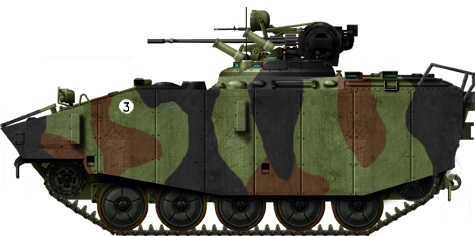
Modernized AMX-10P, up-armoured version 2000s.
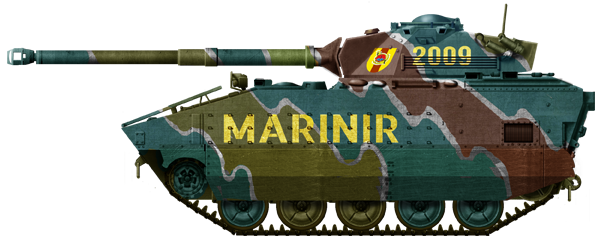
Indonesian AMX-10P PAC-90 Marinir
Video
Gallery
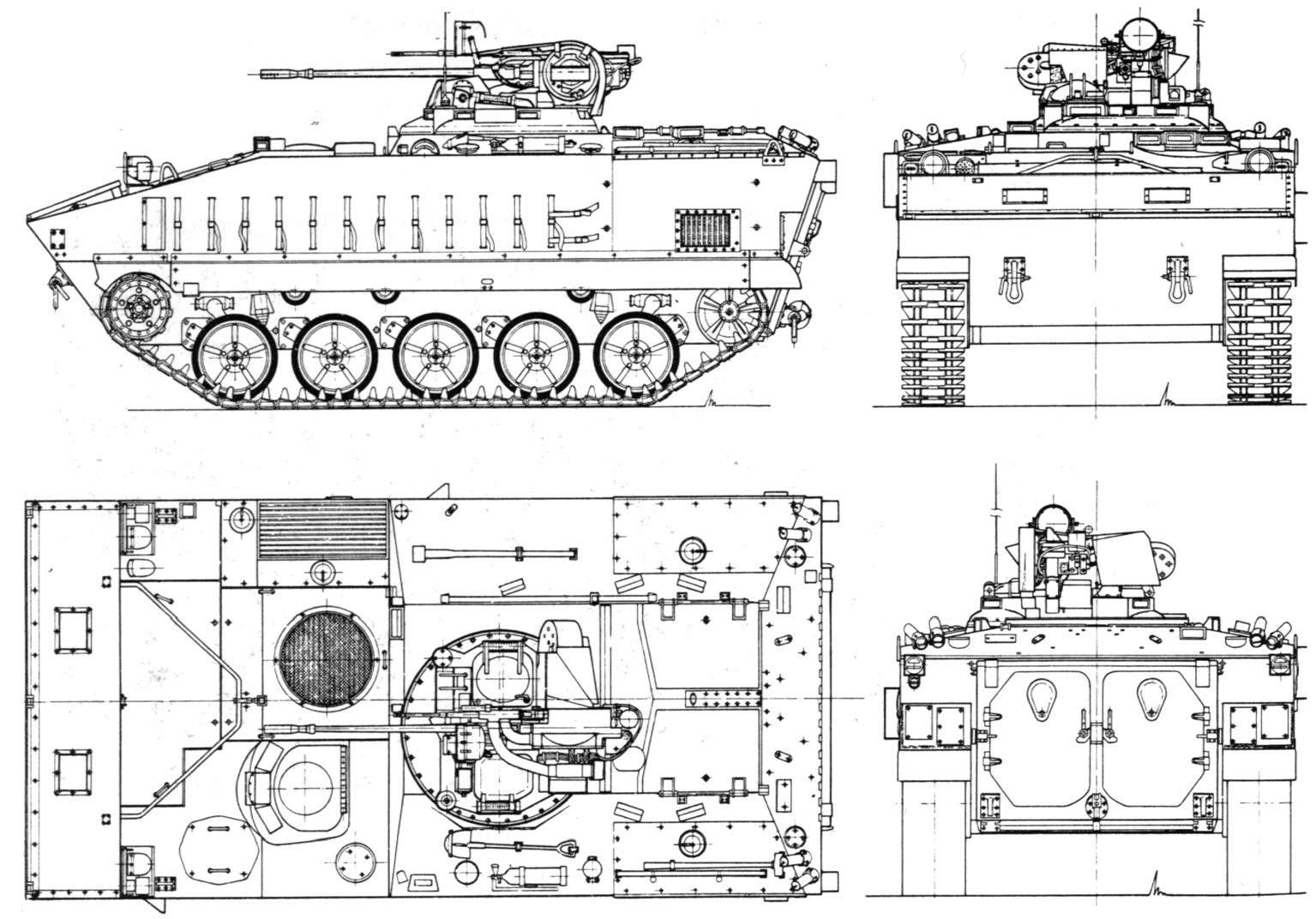
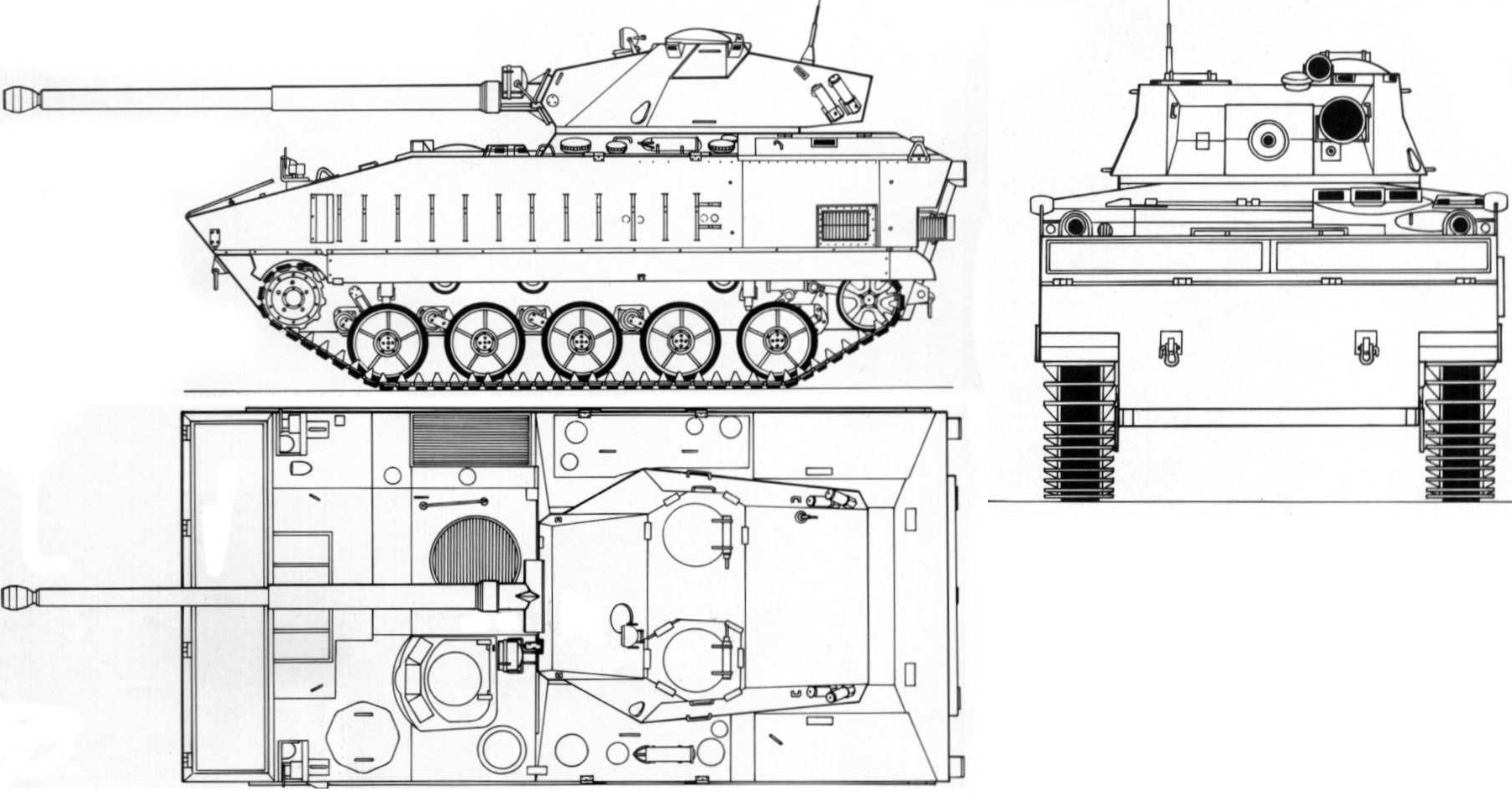

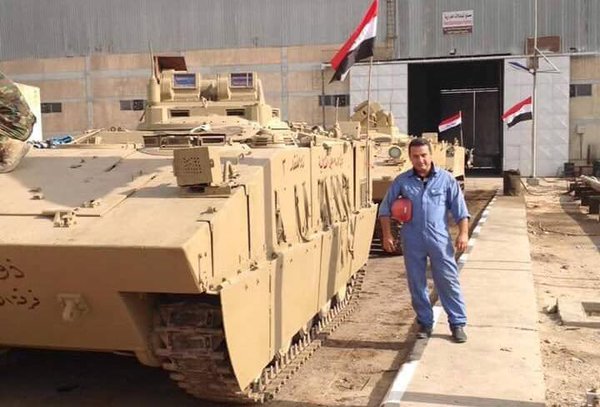
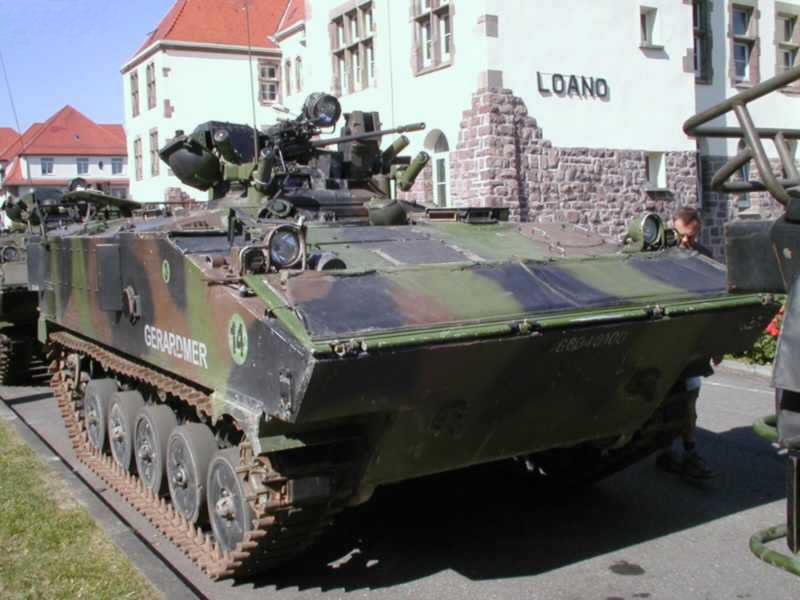
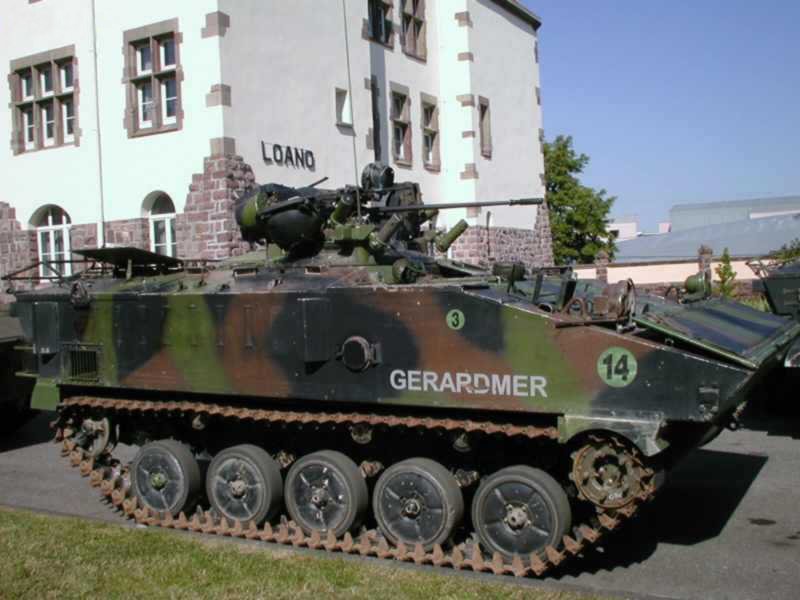
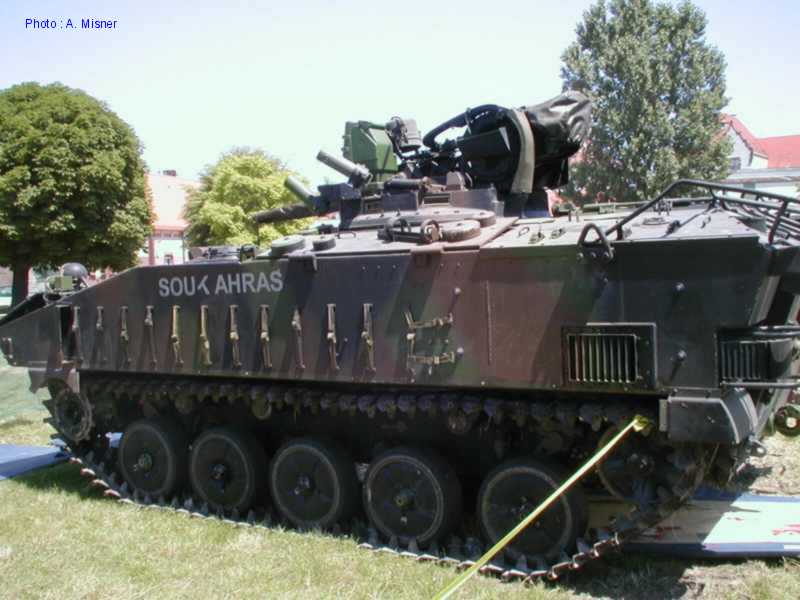
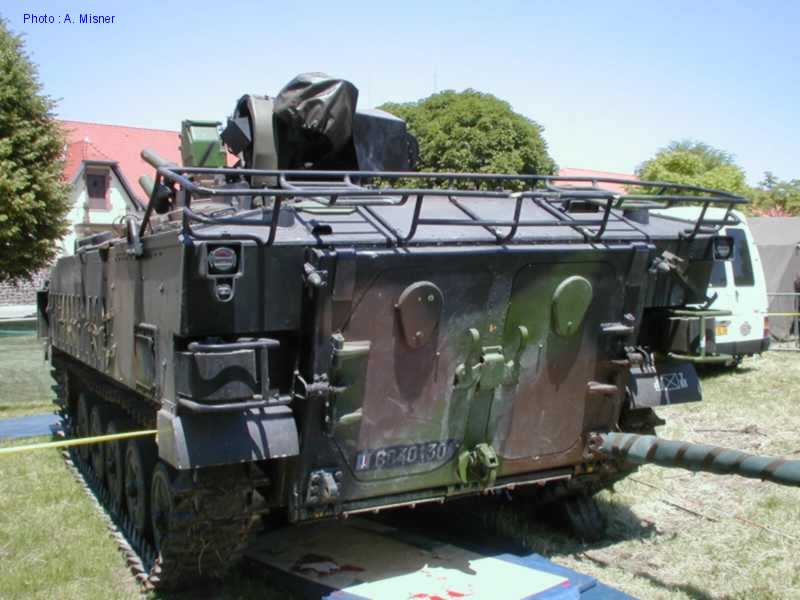
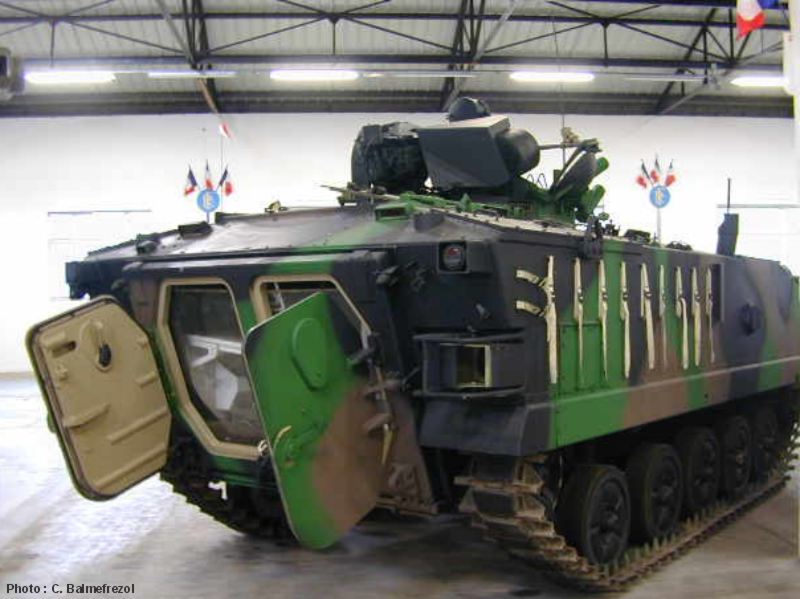
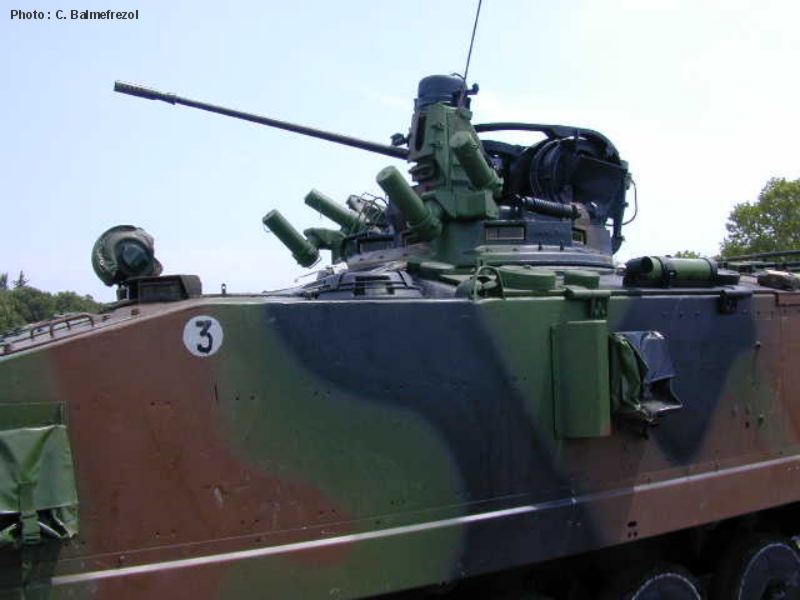
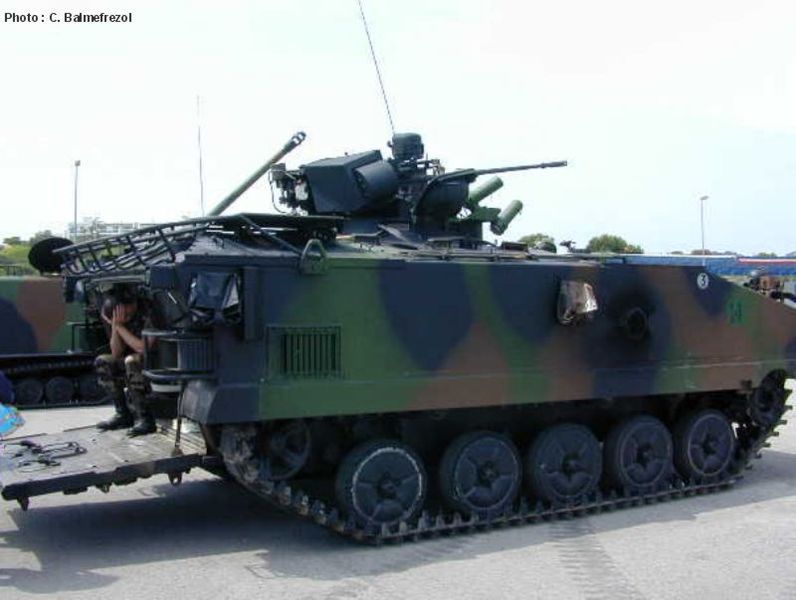
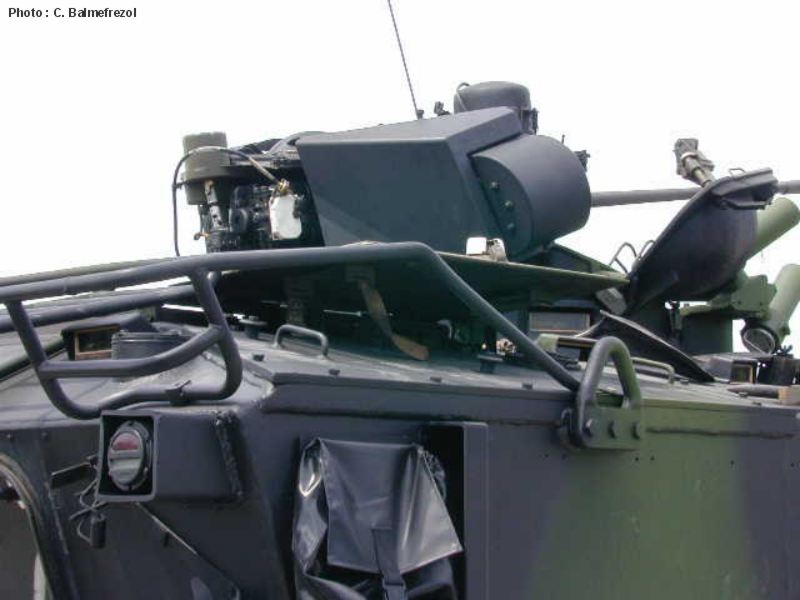
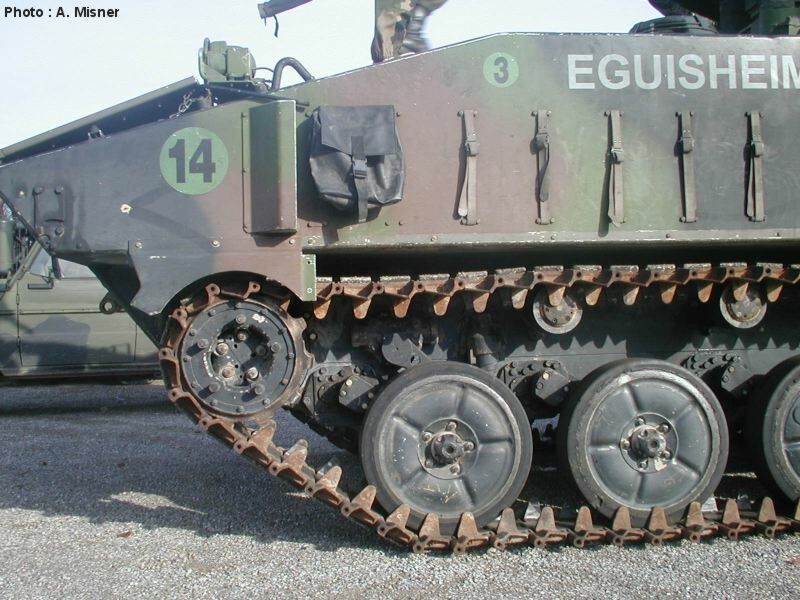
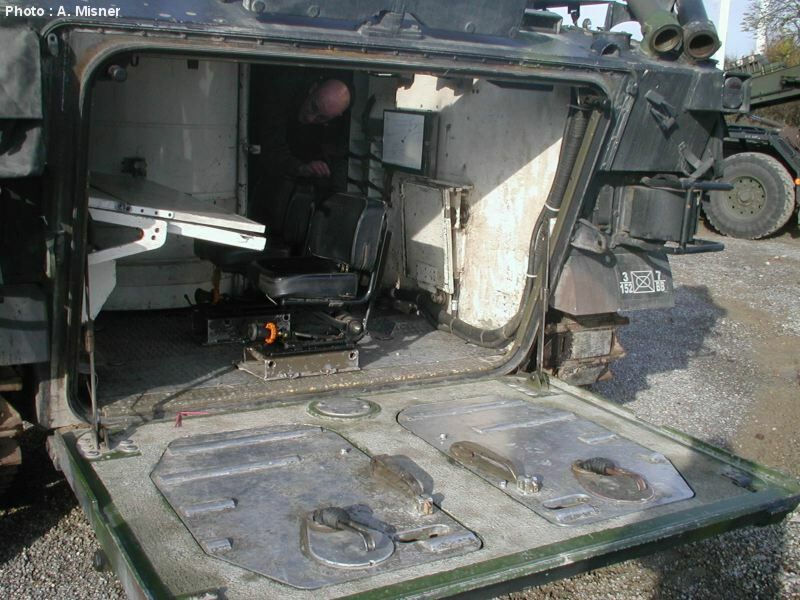
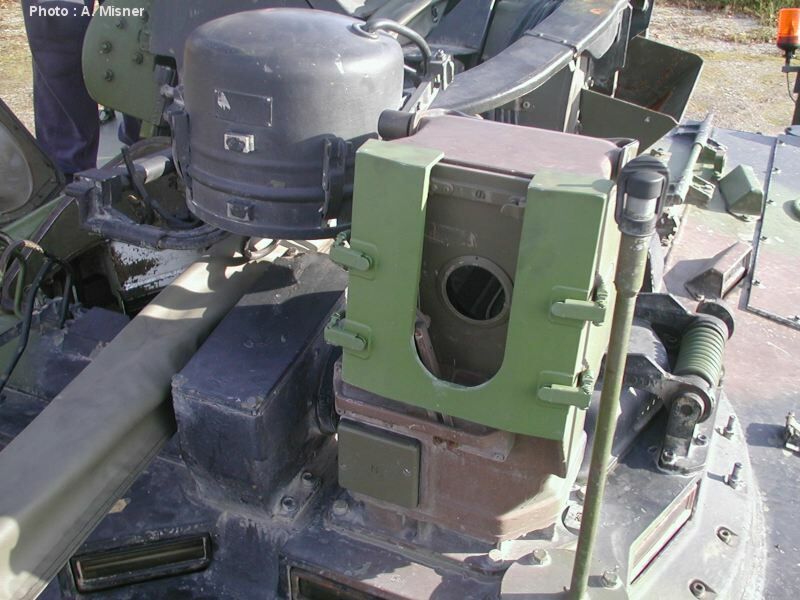
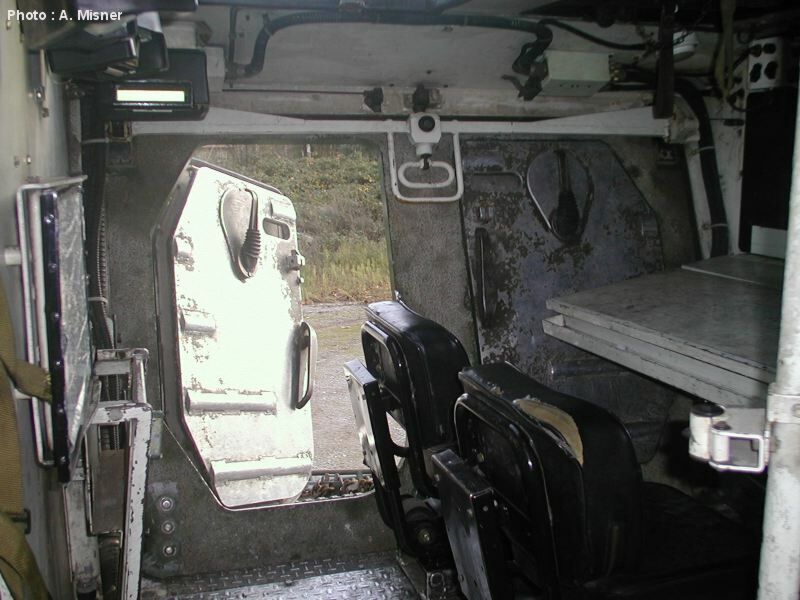
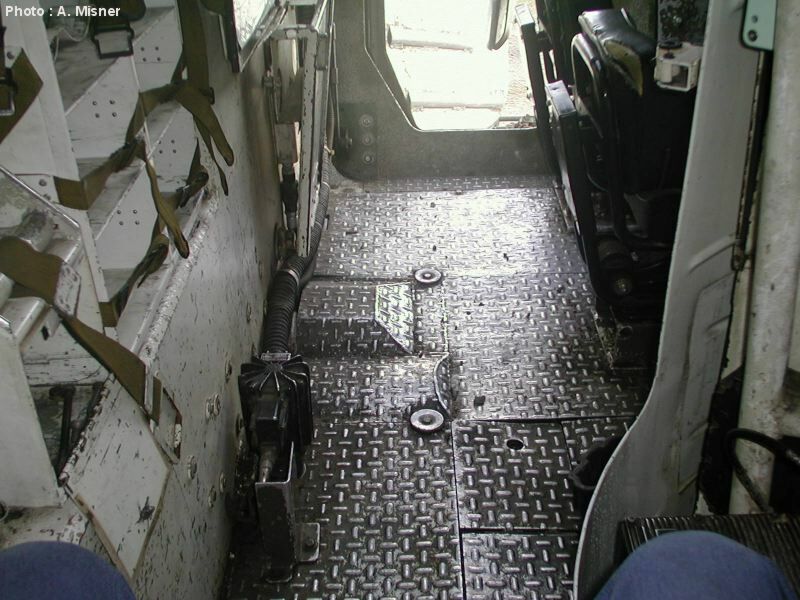

Cold War Tanks


































Cold war tanks posters

Cold War Main Battle Tanks

Cold War Soviet Army
Museums, Movies, Books & Games
The Tanks and Armor in pop culture
Tanks and armored vehicles in general are only really grasped when seen first person: The mass, the scale, it's all there. Explore also the way tanks were covered in the movie industry, in books and in video games.Movies:
Best tanks movie on warhistoryonline.com
On imdb.com
On bestsimilar.com/
miltours.com
liveabout.com/
watchmojo.com
Video Games:
pcgamesn.com
historyhit.com
levvvel.com
vg247.com/best-tank-games
mmobomb.com/
alienwarearena.com

